Are you ready for an adventure in the wild and beautiful American West? I’m going to dive into the captivating world of Montana and Idaho and help you answer the age-old question: Which state is better?
Whether you’re dreaming of snow-capped mountains, serene lakes, or dense forests, both Montana and Idaho offer a breathtaking escape from the hustle and bustle of everyday life.
I’ll guide you through the nitty-gritty details, the cost of living comparisons, and the secrets of Glacier National Park, or dive into the vibrant communities nestled in these vast landscapes.
But most importantly, I want to make this journey all about you.
Whether you’re a nature enthusiast, an outdoor adventurer, or simply seeking a tranquil retreat, this article is tailored to meet your needs and provide you with the best possible insight.
Come along with me as we explore the wonders of Montana and Idaho and discover which state truly reigns supreme. Buckle up, adventurer – it’s going to be an unforgettable ride!
Montana vs Idaho: Why Are They Being Compared and Which Is Better?
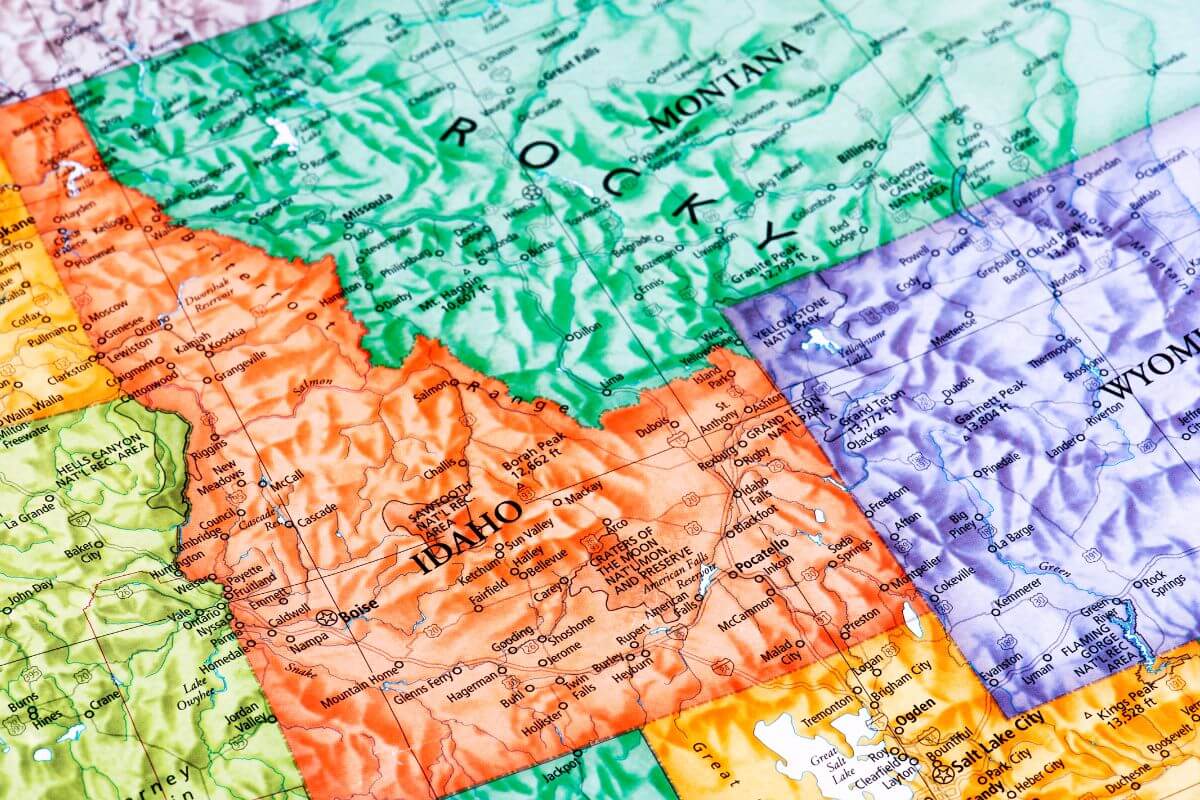
Montana vs Idaho: two states known for natural beauty and outdoor recreational opportunities. But which one is better? That’s what we’re here to find out.
Both states boast stunning landscapes, from snow-capped mountains to placid lakes and dense forests. Montana is home to the famous Glacier National Park, while Idaho offers its fair share of national parks as well.
Montana vs Idaho: Size and Population

Montana boasts an enormous land area making it the fourth-largest state in the nation.
Known for its expansive “Big Sky” scenery, Montana captivates visitors with its breathtaking wild beauty from northern prairie lands to the Rocky Mountains.
In terms of population, Montana holds the distinction of having the third-lowest population density among all states.
Idaho, on the other hand, ranks 38th in total population among the 50 states and 14th in terms of geographic size.
Montana’s capital city is Helena, while the largest and most notable city is Billings. Idaho, on the other hand, is home to Boise, which serves as its capital and largest city.
Although Montana is larger in land area, Idaho has a larger population. Let’s take a look at Montana and Idaho’s population estimates and total area:
| Montana | Idaho | |
| Population (2022 estimate) | 1,122,867 | 1,939,033 |
| Area (square miles) | 147,040 | 83,569 |
Montana vs Idaho: Lifestyle and Cost of Living
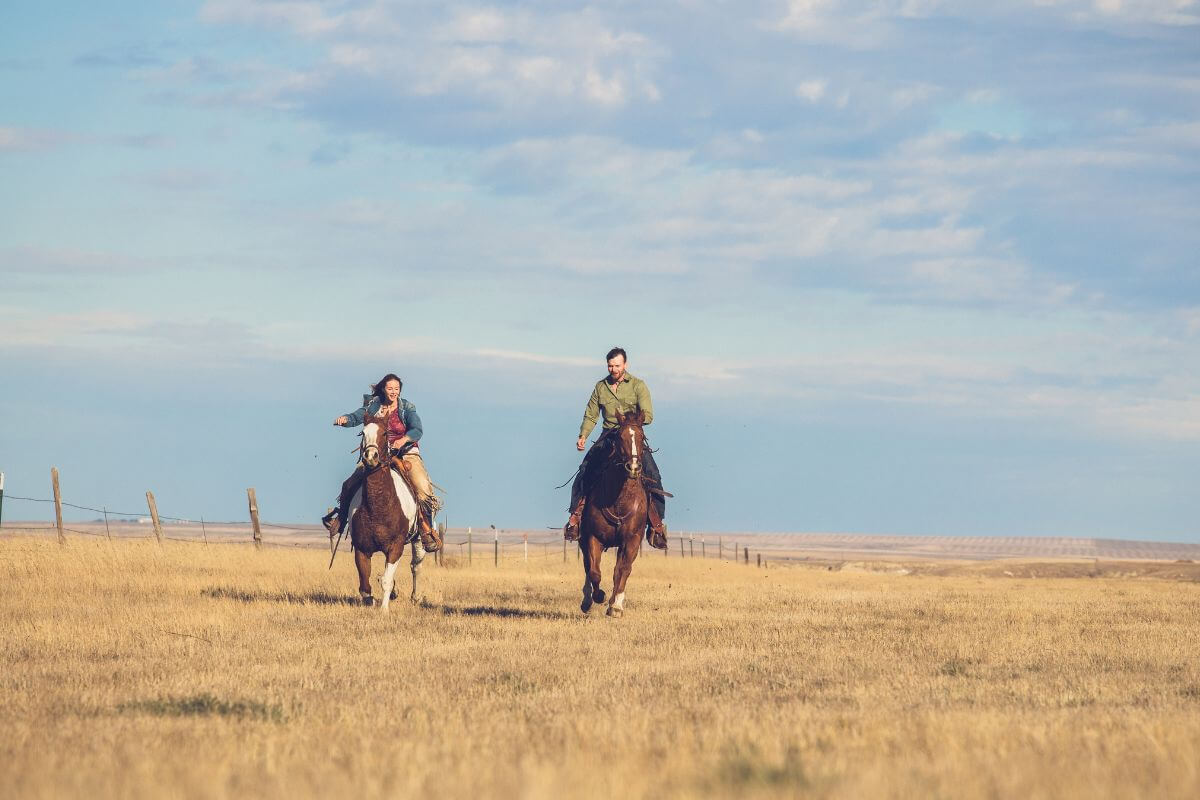
The cost of living index helps us understand how different areas compare in terms of daily living costs, including accommodation, food, transportation, and healthcare costs.
If you plan to move from one state to another, it is wise to learn about the cost structures of and living index first.
Here are some “QuickFacts” cost of living data from the United States Census Bureau.
1. Housing and Utilities – Regardless of the state you reside in, housing is likely to be your largest recurring expenditure. In general, Idaho has higher housing costs compared to Montana. Both states have similar utility costs.
| Housing and Utilities | Montana | Idaho |
| Owner-occupied Housing Unit Rate (National Homeownership Rate 65.9%) | 69.10% | 71.70% |
| Median Selected Monthly Owner Costs (with a mortgage) | $1,538 | $1,395 |
| Median Selected Monthly Owner Costs (without a mortgage) | $476 | $411 |
| Average Home Prices as of February 2023 (National Average Home Value $359,000) | $430,528 | $429,606 |
| Monthly Housing Cost Range | $614 – $1,681 | $762 – $1,776 |
| Monthly Utilities Cost per month (National Average Utility Cost $429.33 per month) | $297 | $297 |
2. Education – Both states offer a similar educational landscape in terms of opportunities.
| Education | Montana | Idaho |
|---|---|---|
| Bachelor’s Degree or Higher (percent of persons age 25 and above) | 33.7% | 29.1% |
| High School Graduates or Higher | 94.4% | 91.2% |
3. Economy – Montana has a slight economic advantage over Idaho in terms of total retail sales per capita. If you enjoy shopping or are interested in vibrant local businesses, Montana may offer more options for you to explore.
| Economy | Montana | Idaho |
|---|---|---|
| Total Retail Sales per Capita (2017) | $16,070 | $14,500 |
4. Health – The annual cost of health care is higher in Montana than in Idaho. Persons without health insurance are similar in both states.
| Health | Montana | Idaho |
|---|---|---|
| Annual Healthcare Costs per Person | $8,289 | $6,714 |
| Persons with Disabilities (%) | 9.3% | 9.6% |
| Persons without Health Insurance (%) | 10.1% | 10.5% |
5. Labor Force – Both states offer similar opportunities for employment and career growth.
| Labor force | Montana | Idaho |
|---|---|---|
| Civilian Labor Force Participation Rate (percent of population age 16 years and older) | 62.9% | 62.8% |
| Percentage of Female Persons in the Labor Force | 49.3% | 49.6% |
6. Transportation – Montana has a shorter mean travel time to work compared to Idaho. A shorter commute time means more time for leisure or family, so Montana might be a preferable choice. Daily travel costs in both states are similar.
| Transportation | Montana | Idaho |
|---|---|---|
| Mean Travel Time to Work Workers age 16 years and older (The national average travel time to work is 26.8 minutes ) | 18.6 minutes | 21.2 minutes |
| Annual Transportation Costs | $5,316 – $15,073 | $5,316 – $15,073 |
7. Income – If you prioritize household income, Idaho might be more appealing, whereas a higher per capita income in Montana means that individuals have more personal financial resources.
| Income | Montana | Idaho |
|---|---|---|
| Median Household Income (2021 dollars) | $60,560 | $63,377 |
| Per Capita Income | $34,423 | $31,509 |
| Business Firms Payroll (Total Annual Payroll) | $18,435,923 | $32,652,257 |
8. Groceries and Food – Monthly food costs may depend on persons per household, though on an individual basis, Montana has a higher cost per person compared to Idaho. Data from The Bureau of Economic Analysis:
| Groceries and Food | Montana | Idaho |
|---|---|---|
| Average Price Annual Non-Restaurant Food | $3,971 | $3,296 |
| Monthly Cost per Person | $331 | $275 |
| Daily Cost per Person | $11 | $9.16 |
9. Computer and Internet Use – A higher percentage of people have internet in their homes in Idaho compared to Montana.
| Computer and Internet Use | Montana | Idaho |
|---|---|---|
| Broadband Internet Subscriptions at Home | 85.2% | 88% |
10. Poverty and Unemployment Rate– Both states provide a favorable living environment when it comes to persons in poverty. The unemployment rate in Montana is lower than in Idaho. Both states have lower rates compared to the national level.
| Poverty and unemployment rate | Montana | Idaho |
|---|---|---|
| Poverty Rate (%) | 11.9% | 11.0% |
| Unemployment Rate (National Unemployment Rate 3.6%) | 2.3% | 2.6% |
Montana vs Idaho: Weather and Terrain
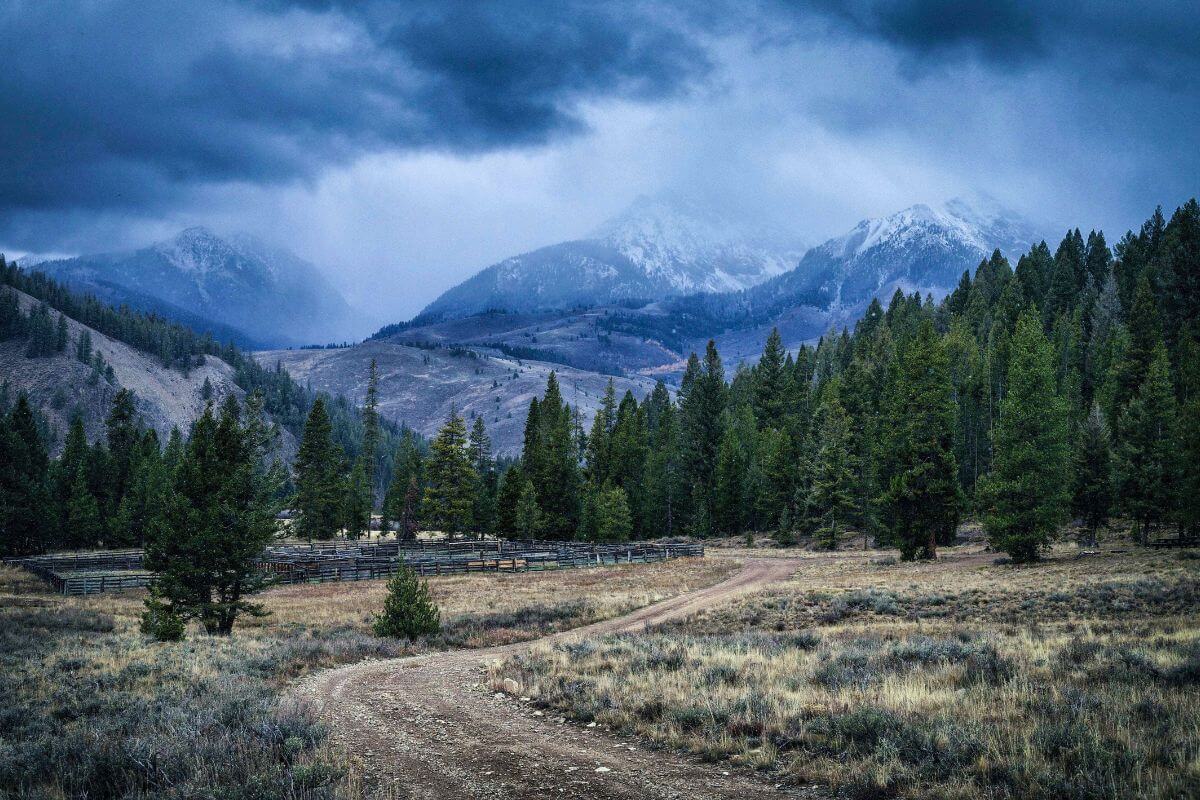
Montana’s geography is a breathtaking display of natural beauty, featuring large variations in climate and topography. In the southwest, you’ll find majestic mountains that stretch as far as the eye can see.
As you venture towards the northeast, the landscape transitions into a resemblance of the Great Plains, with wide-open spaces waiting to be explored.
Montana experiences cold waves throughout the winter, occurring about 6 to 12 times, particularly in the northeastern region.
Temperatures can dip below zero, with the coldest recorded temperature standing at a bone-chilling -70°F. But don’t let the cold deter you, as hot weather graces the eastern parts of Montana during the summer months.
However, unlike other regions, hot spells here are less frequent and not oppressive. You’ll also encounter the unique “Chinook” weather phenomenon, bringing warm, windy periods in the east during winters.
The state’s precipitation varies widely, with the wettest areas located near the mountain ranges. Annual snowfall ranges from heavy in the mountains to lighter in the east.
Spring and early summer bring the greatest volume of flow in pristine rivers, accompanied by the mesmerizing power of flood threats.
While hailstorms and occasional tornadoes occur, droughts are infrequent, allowing Montana to maintain its vibrant and lush landscapes.
On the other hand, Idaho showcases a strikingly diverse topography, with rugged mountains, breathtaking canyons, serene valleys, and vast plains to explore.
Influenced by maritime air from the Pacific Ocean, especially in the north, Idaho enjoys a unique blend of climates.
High elevations in Idaho experience monthly mean temperatures below freezing during winter, reaching chilling lows of -60°F.
Precipitation varies across the state, with wetter areas near the Bitterroot Mountains and the Columbia River Gorge.
In contrast to the winter-dry summer pattern seen in other areas, eastern Idaho experiences the reverse, adding an interesting twist to the state’s weather dynamics.
Montana vs Idaho: Natural Resources and Wildlife
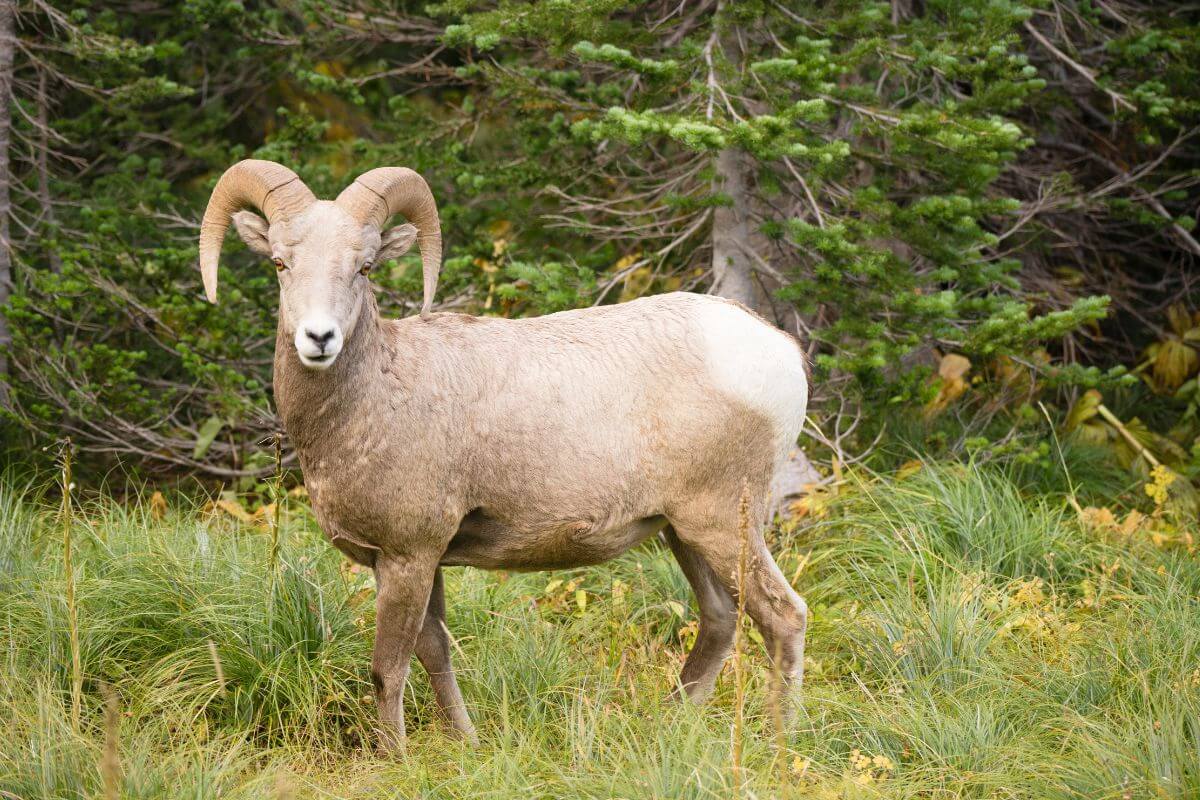
In Montana, you’ll find yourself surrounded by snow-capped mountains, dense forests, and placid lakes.
But what sets Montana apart is its status as the only producer of palladium and platinum. The state also leads in talc production and is a major producer of copper, molybdenum, garnets, and silver.
You’ll be amazed by Montana’s abundant resources, including bentonite, common clays, construction sand and gravel, crushed and dimension stone, gold, lime, and gemstones.
Idaho, on the other hand, is known for its production of pumice or pumicite and leads in the production of garnet, feldspar, lead, molybdenum, perlite, phosphate, silver, zeolites, and zinc.
Idaho also produces aggregates, cement, copper, dimension stone, lime, and gemstones, and with these resources, Idaho presents its commitment to sustainability and responsible resource management.
In terms of national parks, Montana is home to two iconic destinations: Glacier National Park and Yellowstone National Park.
These parks offer breathtaking views, stunning waterfalls, and the opportunity to witness some of the most magnificent wildlife in their natural habitats.
Meanwhile, Idaho shares the renowned Yellowstone National Park with Montana, giving visitors the chance to explore and appreciate the awe-inspiring wonders of this natural gem.
When it comes to wildlife, both states have their own diverse range of species.
In Montana, you may encounter grizzly bears, beavers, deer, ground squirrels, magpies, pigeons, pocket gophers, porcupines, prairie dogs, rabbits, raccoons, skunks, snakes, starlings, tree squirrels, voles, woodpeckers, and woodrats.
Idaho, on the other hand, offers a variety of wildlife including woodland caribou, grizzly bears, and bald eagles. The state also boasts smaller species like Coeur d’Alene salamanders, calliope hummingbirds, and pygmy shrews.
Montana vs Idaho: Wild West Connection
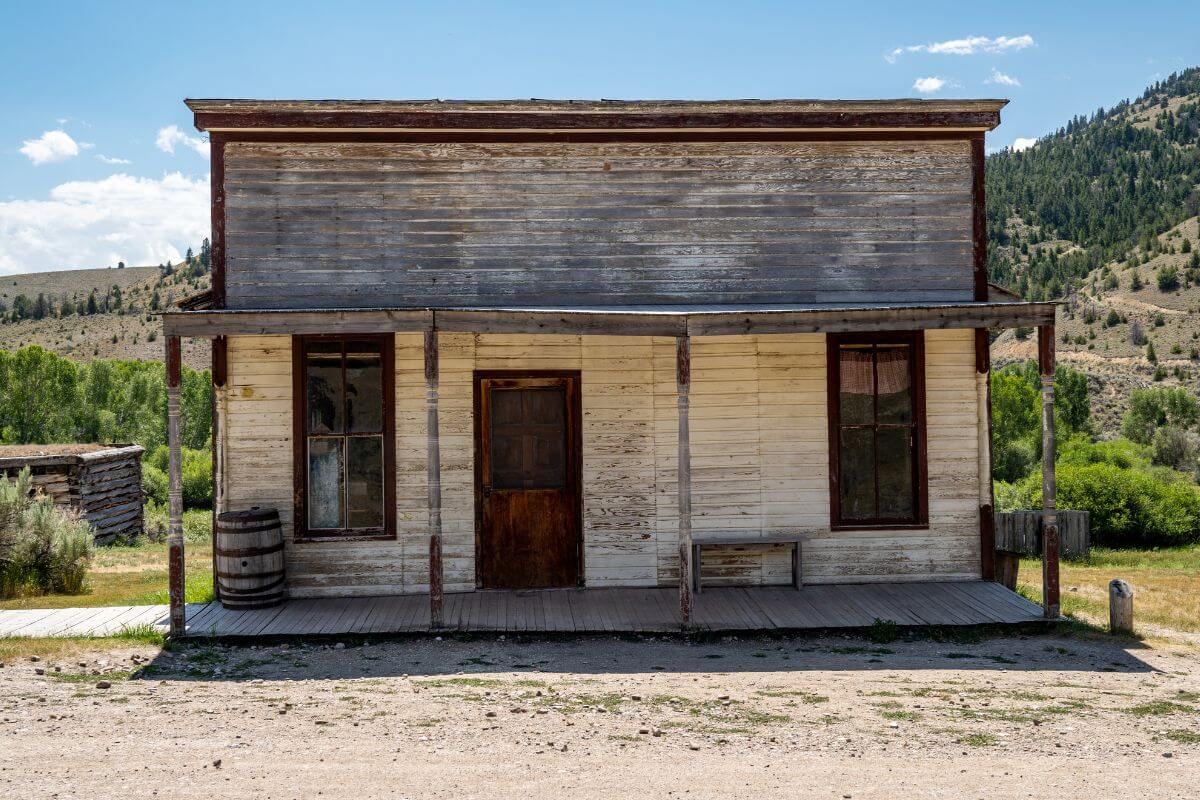
The Wild West, a period that began after the American Civil War and lasted for 30 years, was defined not only by its geographic boundaries but also by the unique challenges and experiences it presented.
In terms of similarities, both Idaho and Montana were influenced by the rugged and challenging conditions of the Wild West.
The arrival of white settlers in these regions often displaced Native American communities and encountered untamed landscapes.
The harsh realities of lawlessness, battles, and adventurous journeys were common experiences in both states.
However, there are also notable differences between Idaho and Montana in terms of their Wild West culture and pedigree.
Montana has long been associated with the classic cowboy culture, cattle ranching, and mining.
Towns like Butte and Helena became prominent during this period, showcasing the vibrant spirit of the Wild West.
On the other hand, Idaho had unique characteristics that set it apart. Known as the “Gem State” for its rich mineral resources, Idaho held prominence in potato production, highlighting its agricultural heritage.
The state’s diverse natural beauty and its role as a hub for ranching and farming contribute to its individual Wild West identity.
Both Idaho and Montana share a common historical connection to the western frontier and the challenges of the Wild West.
They hold a place in the collective memory of this era, adding to the rich tapestry of the region’s history.
Today, visitors can explore the remnants of this vibrant past through various attractions, including rodeos that highlight the cowboy-type activities synonymous with the Wild West.
With unique counties and a commitment to preserving their Wild West heritage, both Idaho and Montana continue to embrace and celebrate their Western roots.
Living in Montana Pros and Cons
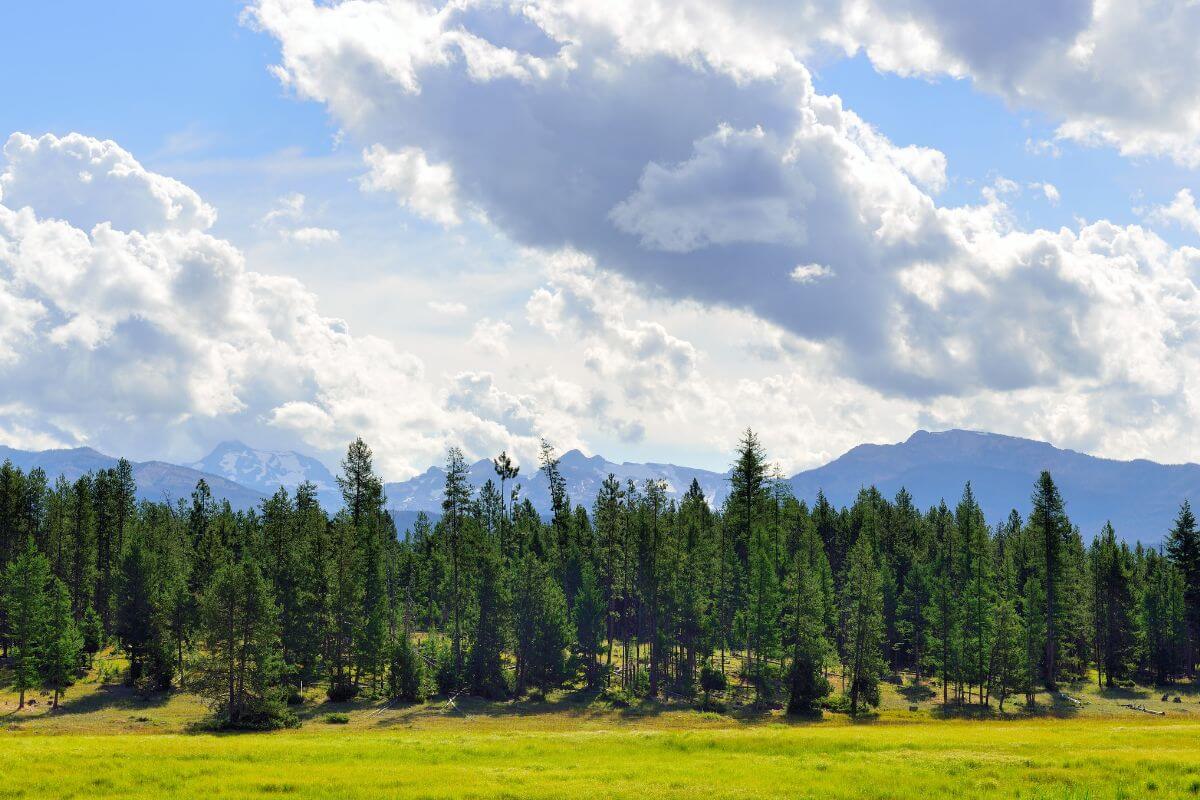
Living in Montana offers a unique and captivating experience that sets it apart from other states. Here are some of the pros of living in Montana:
- Natural Beauty – Montana is known for its stunning landscapes, including the Rocky Mountains, Glacier National Park, and Yellowstone National Park.
- Low Population Density – Montana holds one of the lowest populations in the US, which means more space and a slower pace of life. If you prefer a quieter rural lifestyle, Montana may be an option.
- Outdoor Recreation – With its wilderness areas and numerous recreational opportunities, whether you enjoy camping, hunting, rafting, or simply exploring nature, there is plenty to keep you engaged.
- Lower Cost of Living – Montana generally has a lower cost of living compared to many other states, including lower housing costs. This is an advantage if you want to stretch your budget.
However, it’s essential to consider the drawbacks as well. Here are some of the cons of living in Montana:
- Harsh Winters – Montana experiences long, cold winters with heavy snowfall in many areas. If you’re not a fan of cold weather or dealing with snow, the winters in Montana may be challenging.
- Limited Job Opportunities – Montana’s economy is based on agriculture, tourism, and natural resource extraction. While there are opportunities in these industries, employment in some fields is challenging.
- Remote Location – Montana is geographically isolated, with larger cities and major amenities far apart. Access to certain services may be limited, and travel to other regions can be time-consuming.
- Healthcare Services – In some rural areas of Montana, access to healthcare services can be limited. Finding specialized medical care or facilities may require traveling to larger cities.
- Read more about some Key Montana Facts
Living in Idaho Pros and Cons
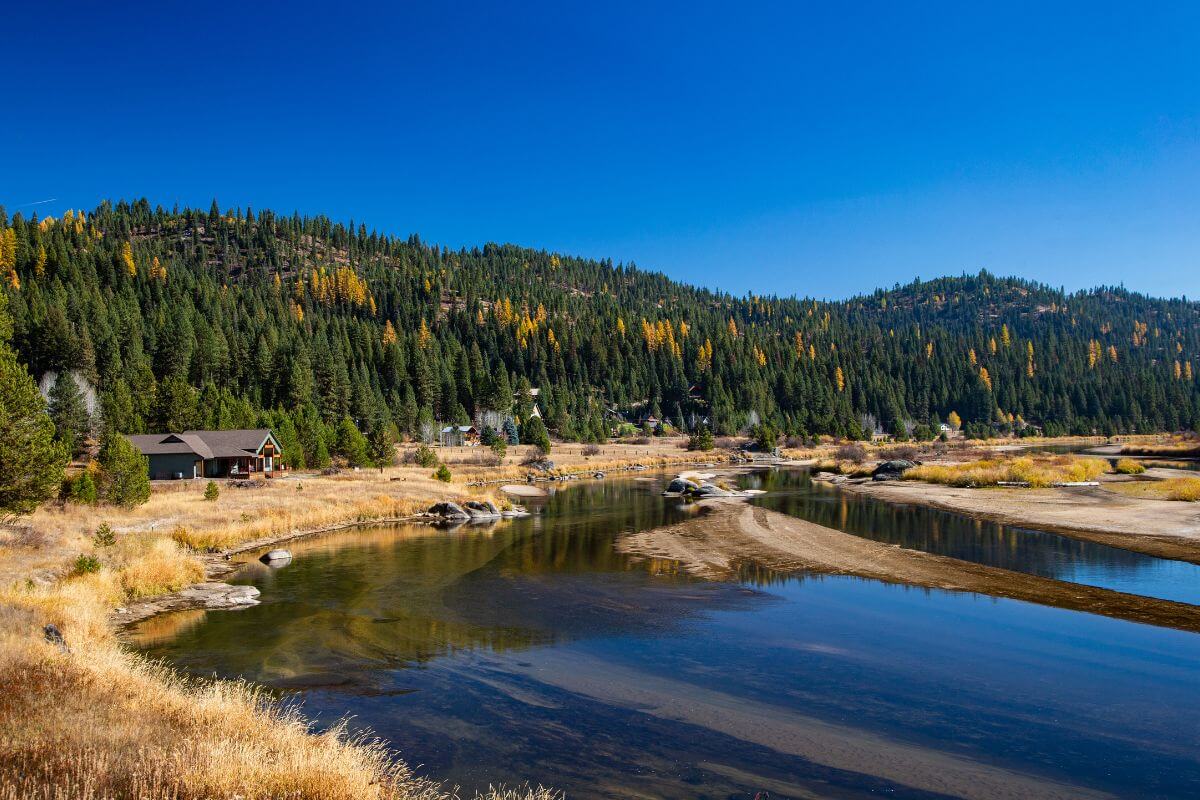
Idaho offers a multitude of advantages for those considering living in the state. It provides a desirable lifestyle for residents seeking a peaceful and affordable place to call home.
Here is a list highlighting some of the pros of living in Idaho:
- Natural Beauty – Idaho’s natural beauty is unparalleled. From jagged mountain peaks to forest lands, serene lakes, and winding fast-flowing rivers.
- Growing Economy – With a strong job market and a business-friendly environment, Idaho’s thriving economy not only brings prosperity but also a sense of stability and security.
- Outdoor Recreation – Whitewater rafting in the Salmon River, skiing in Sun Valley, or simply exploring the beauty of the state’s wilderness, the opportunities for outdoor recreation are endless.
- Quality of Life – Idaho ranks well in terms of safety, and education. With a relaxed and friendly atmosphere, Idaho fosters a high quality of life that is both enriching and satisfying.
- Lower Cost of Living – Idaho’s lower cost of living makes it an appealing option for those seeking affordability without sacrificing the beauty and recreational opportunities of the Mountain West.
However, it’s important to consider the downsides of living in Idaho as well.
- Limited Cultural Offerings – The state may lack certain amenities such as theaters, museums, and diverse culinary options, which are more commonly found in urban areas.
- Growing Population – Idaho’s growing population brings both benefits and drawbacks. Rapid growth can lead to increased traffic, higher housing costs in certain areas, and overcrowding.
- Healthcare Services – In some rural parts of Idaho, access to healthcare facilities and specialized medical care may be limited.
Montana vs Idaho Final Thoughts
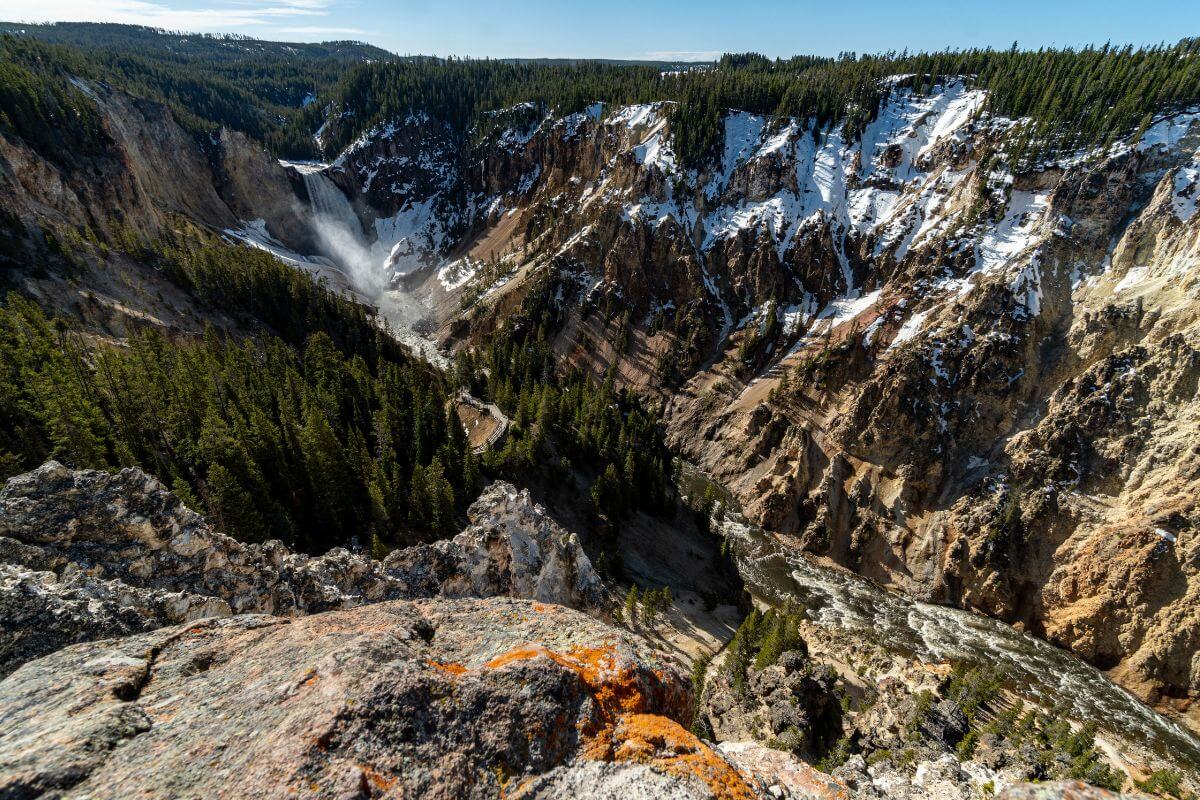
Montana and Idaho both offer unique qualities that make them attractive places to live.
With stunning natural landscapes, including mountain regions, parks, and lakes, they provide ample opportunities for outdoor enthusiasts.
Safety, education, and healthcare are prioritized, ensuring a high quality of life.
Montana has lower housing costs, higher education levels, favorable retail sales per capita, and shorter commutes.
Meanwhile, Idaho boasts higher household incomes, lower healthcare costs, higher broadband subscriptions, and lower food expenses.
The choice between Montana and Idaho depends on individual preferences for housing, education, economy, healthcare, and desired experiences.
Both states offer their distinct blend of natural beauty and quality of life, catering to different lifestyles and preferences.
Montana vs Idaho FAQs
1. Which State Surpasses the Other Between Montana and Idaho?
Comparing Montana and Idaho is subjective and depends on various factors like cost of living, natural resources, outdoor recreation, and crime rates. Montana also typically has higher living costs than Idaho.
Ultimately, the preference between the two states relies on individual priorities and preferences in these areas.
2. Between Montana and Idaho, Which State Has More National Parks?
Between the two states, Montana surpasses Idaho in terms of national parks, boasting two iconic parks, Glacier National Park and Yellowstone National Park.
Although Idaho shares a portion of Yellowstone National Park, the majority of this magnificent park’s area is located in Montana.
3. Between Montana and Idaho, Which State Exhibits Lower Crime Rates?
IIdaho generally exhibits lower crime rates compared to Montana.
Montana has relatively higher in both violent crime rates and property crime rates compared to Idaho, indicating that Montana has higher overall crime rates compared to Idaho.
4. Which State Is More Affordable to Visit, Montana or Idaho?
Idaho may have an edge in affordability due to lower accommodation costs, accessible attractions with lower entrance fees, and relatively affordable dining options in certain areas.
The cost of flights to both states should be included in your budget considerations.
Specific locations and activities within each state can impact the overall cost, so it’s advisable to research prices based on your preferences.
5. Does Montana Have a Lower Cost of Living Than Idaho?
According to 2021 data from the Bureau of Economic Analysis, the average total personal consumption cost in Montana is $47,887 while in Idaho it is $39,739. This means that Idaho has a lower cost of living than Montana.
To quench your fascination with Montana and gain deeper insights, stay connected and explore these captivating articles:
- https://www.census.gov/geographies/reference-files/2010/geo/state-area.html
- https://www.gethealthy.dhw.idaho.gov/overview-of-idaho
- https://wrcc.dri.edu/Climate/narrative_id.php
- https://wrcc.dri.edu/Climate/narrative_mt.php
- https://www.fs.usda.gov/detail/ipnf/learning/?cid=fsm9_019205
- https://fwp.mt.gov/conservation/living-with-wildlife
- https://ucr.fbi.gov/crime-in-the-u.s/2019/crime-in-the-u.s.-2019/tables/table-10/table-10-state-cuts/montana.xls
- https://ucr.fbi.gov/crime-in-the-u.s/2018/crime-in-the-u.s.-2018/tables/table-8/table-8-state-cuts/idaho.xls
- https://www.umt.edu/this-is-montana/columns/stories/montana-statehood-part1.php
- https://www.usgs.gov/centers/national-minerals-information-center/mineral-industry-idaho
- https://www.usgs.gov/centers/national-minerals-information-center/mineral-industry-montana

